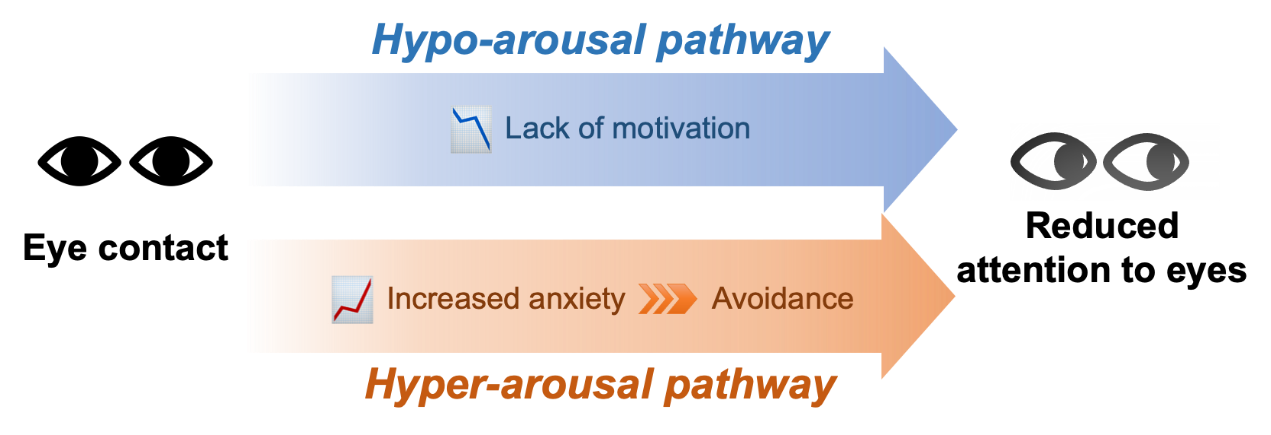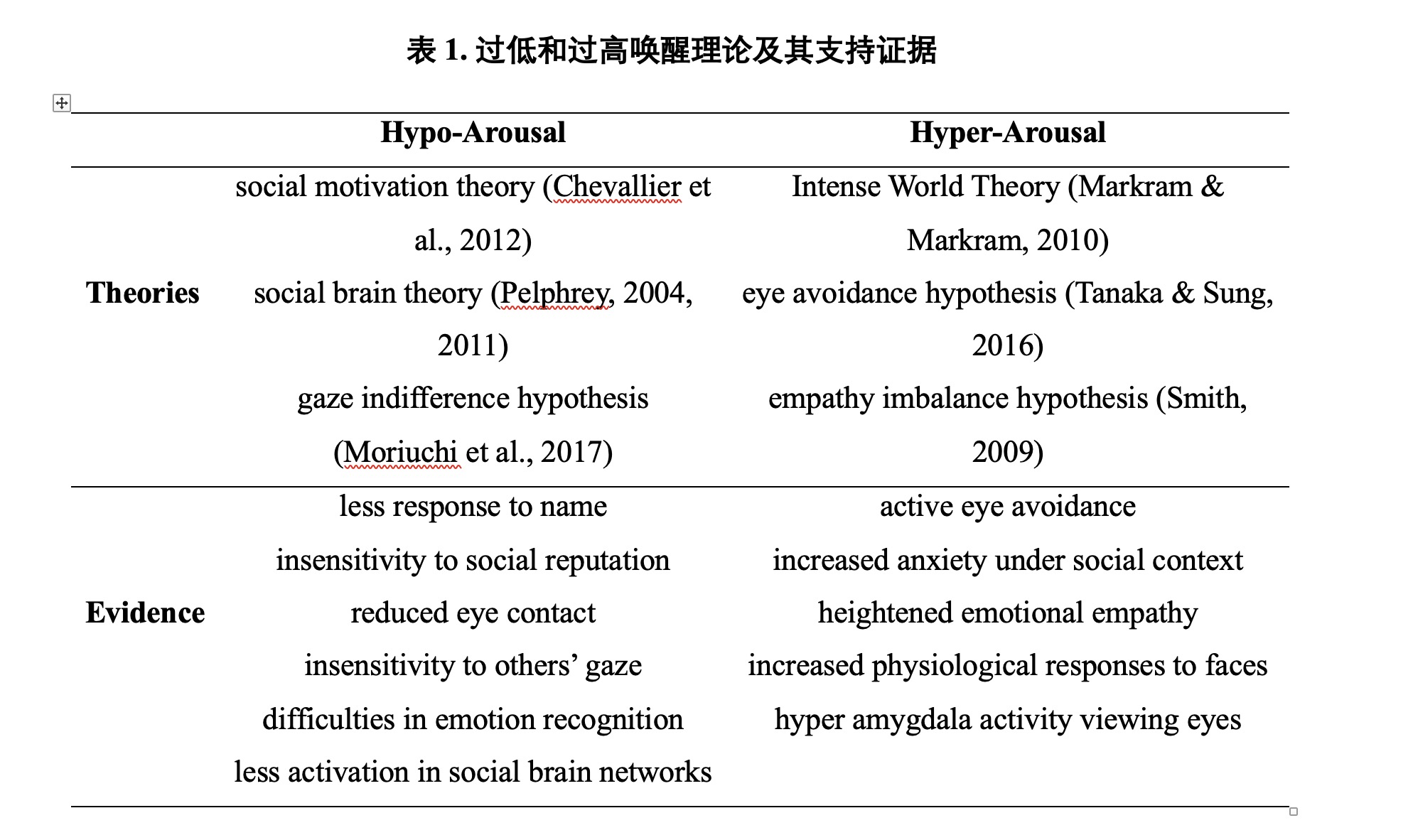Dr. Li Yi: Hypo- or Hyperarousal? A New Perspective on Social Impairments in Autism
Dr. Li Yi was invited to contribute to Child Development Perspectives, a review journal of developmental psychology, and published a review article titled "Hypo- or Hyperarousal? The Mechanisms Underlying Social Information Processing in Autism". In this article, Dr. Li Yi, Dr. Qiandong Wang of Beijing Normal University, Ci Song (PhD student), and Professor Zhuo Han of Beijing Normal University summarized the research results of their research group in the field of autism for many years, and they proposed a new perspective to understand psychopathological mechanisms of autism based on arousal.
Autistic individuals often show different patterns in social information processing. There remain debates about the mechanisms behind their social information processing. The article re-examines existing theories and evidence, summarizing and categorizing them as the hypo-arousal or hyperarousal view of social information processing in autism. Among them, the hypo-arousal view proposes that autism has a reduced motivation or sensitivity to process social information and is supported by a range of behavioral, eye-tracking, and neuroimaging studies. However, recent evidence suggests that too few eye fixations play a role in explaining the low brain activation in autistic individuals, challenging the hypo-arousal view. The idea of hyperarousal, on the other hand, highlights the role of social stimuli processing on emotional and physiological responses, noting that these responses can cause anxiety and discomfort in autistic individuals.
The core symptoms of autism, social impairments as well as repetitive and stereotyped behaviors, have been extensively studied, but the mechanisms behind them remain unclear. For example, many studies have revealed abnormal eye gaze patterns in autistic individuals, but the mechanism of such patterns is still under debate: Some researchers believe that the lack of eye gaze in autistic individuals is mainly due to hyperarousal caused by looking directly at the eyes (eye avoidance theory; Tanaka & Sung, 2016), while others believe that this is due to the patient's insensitivity to eye information (social motivation theory; Chevallier et al., 2012, see Figure 1).
Figure 1
Hypo- and Hyperarousal Pathways (With Reduced Attention to Eyes as an Example)

Note. In the hypo-arousal pathway, autistic individuals show diminished social motivation and social interest, resulting in their reduced attention to eyes (social motivation theory; Chevallier, Kohls et al., 2012). In the hyperarousal pathway, eye contact would evoke hyperarousal and overwhelming anxiety in autistic individuals, who then avoid looking at the eyes to reduce tension and discomfort (eye avoidance theory; Tanaka & Sung, 2016).
The paper first reviewed relevant theories of hypo-arousal in autism, including the social motivation theory (Chevallier et al., 2012), the social brain theory (Pelphrey, 2004, 2011) and related supporting evidence. These theories believe that the social interaction impairments in autistic individuals result from their insensitivity to social information. The article also reviewed recent research and perspectives that challenge the theory of hypo-arousal. The article then reviewed three theories that support the hyperarousal view (eye avoidance theory, Markram & Markram, 2010; empathy imbalance theory, Smith, 2009; intense world theory, Markram & Markram, 2010) which emphasize that social situations can cause affects such as anxiety and nervousness in autistic individuals, thereby affecting their social information processing (see Table 1).

The arousal level also affects the repetitive stereotyped behaviors of autistic individuals: When individuals are in hyperarousal, their repetitive stereotyped behaviors can block redundant environmental input, reducing the arousal level of the individual; when the individual is in hypo-arousal, repetitive stereotyped behaviors are a means of supplementing sensory input (Lidstone et al., 2014).
There may be heterogeneity in the arousal patterns of social information processing in autistic individuals. For example, the arousal level may vary with age and context. Therefore, the article suggested that when formulating an individualized intervention plan, the individual's arousal pattern needs to be considered to find the most suitable intervention strategy (see Figure 2)
Figure 2
Hypo- and Hyperarousal Theories Lead to Different Autism Intervention Strategies Respectively

Under the guidance of this theoretical framework, Dr. Li Yi's research group has carried out a series of studies on the social impairments and abnormal sensory perception of autism, including the abnormalities of face processing, empathy, sensory perception, and their neurophysiological mechanisms in autistic children, and examined how comorbidities (e.g., social anxiety) affect arousal levels in autism and thus affect social impairments in autism. The papers published by the research group support both the hypotheses of hyperarousal and hypo-arousal. Based on this, it is speculated that the two hypotheses may not be mutually exclusive but coexist. Autistic children, for example, rarely initiate or participate actively in social activities due to hypo-arousal; however, once they do, they shift from a hypo-arousal state to a hyperarousal state, resulting in avoidance.
Child Development Perspectives (CDP), founded in 2006, is a review journal under the Society for Research in Child Development, which mainly publishes review papers in a certain field of developmental psychology.
Dr. Li Yi is the first and co-corresponding author of the article. Dr. Qiandong Wang from Beijing Normal University, doctoral student Ci Song, and Professor Zhuo Rachel Han from Beijing Normal University (co-corresponding author) all made important contributions to the article.
Article link:https://srcd.onlinelibrary.wiley.com/doi/full/10.1111/cdep.12466